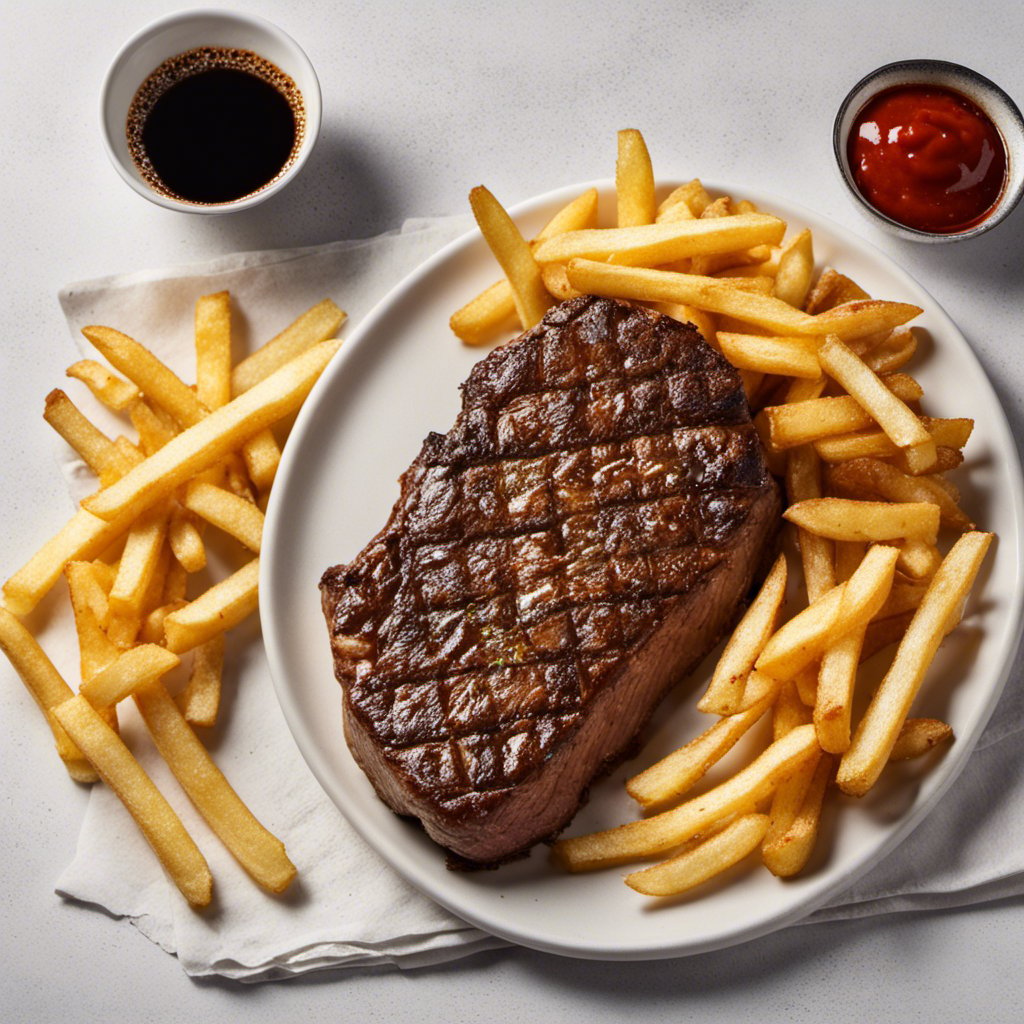Brown Spots On Steak: Is It Okay To Eat?
So you’re planning a delicious steak dinner.
You’ve got your favourite cut waiting in the fridge, you’ve selected the tastiest sides, and you’re all ready to fire up the barbecue or the grill.
But as you start to gather your ingredients together to do the necessary prep, you notice brown spots on your steak.
In this situation, it’s totally understandable to be concerned.
After all, steak is usually a special meal that you don’t want to have ruined before you’ve even begun, and you might have worries about food safety.
So what do brown spots on steak mean?
Is it okay to eat, or do you need to throw it away?
Here’s what you need to know…
Why are there brown spots on my steak?
Brown spots on steak are often caused by a process known as oxidation.
According to the US Department of Agriculture, this is a chemical change in myoglobin due to the oxygen content, and it’s a normal and expected part of refrigerator storage.
It’s important to note that a change in colour does not necessarily indicate spoilage, and it could well be the case that the meat is still perfectly safe to eat.
You should look for other signs of spoilage when making your decision.
If the meat has an off odour, is slimy or tacky to the touch, or has become sticky, then these are likely to be the biggest indicators that the steak is off and should not be consumed.
Whilst brown spots on steak aren’t always indicative of a problem, it’s a good reminder that you should cook the meat sooner rather than later!

Why has my steak changed colour?
Let’s consider the chemical process that steaks undergo when exposed to oxygen, which is the cause of the change in colour.
When you purchase raw beef in vacuum packaging, you’re likely to notice that it’s a deep, rich burgundy hue.
This is the meat’s natural colour, and when you see this on the supermarket shelves, it’s likely to be because the packaging has ensured that the meat hasn’t yet been overly exposed to oxygen.
Over time though – usually the course of a few days, depending on the packaging that’s used – the meat will turn to a deep red.
This is quite simply the result of the myoglobin in the meat being exposed to oxygen.
Within a few more days, this same process will turn the meat brown.
If you’ve ever opened a packet of steaks or ground beef and kept some at home in your fridge after only using part of the packet, or you’ve bought your meat in butchers’ paper, you might have noticed that this process happens very quickly when the meat isn’t sealed and vacuum packed.

What’s the best way to store steaks?
Ideally, you’ll buy your steaks on the day that you plan to eat them, so they are enjoyed at their very best.
Of course though, this isn’t always possible.
If you need to store them for more than a few days – or your plans have changed and you can’t use them before the refrigerator use-by date – then the best idea could be to freeze them.
These days, steaks that you purchase at the supermarket will often have freezing instructions on the label, which should be your first port of call for guidance.
Keep in mind though that to enjoy steaks at their best, you should defrost and cook them within 4 to 12 months of purchase.
Once this time has passed, they may experience freezer burn, which can severely impact the quality of the meat.

What are the signs that my steak has gone off?
Here are the important signs you should look out for that indicate that your steak has gone off:
- It’s passed its use-by date. Though some items have a ‘best before’ date that can be used as a guideline rather than a hard and fast rule, meat isn’t one of them. Be mindful of the use-by dates, and always keep an eye on them when you’re buying your meat and when you’re creating your meal plan for the week. I never take a chance with steak that is past its use-by date
- It has an unpleasant smell. Your smell is one of the best senses for checking your steak, and if it’s foul, very strong, or unpleasant, it’s time to toss it in the bin
- It has white, yellow, or green patches. These are likely to be mould, and the steak can no longer be safely eaten.
So is brown steak safe to eat?
Steak turning brown is a normal chemical reaction caused by the refrigeration process, and in itself, it isn’t necessarily an indicator that the meat has gone off.
It is however a sign that you should use your steaks at the earliest possible opportunity, to avoid wastage and to ensure that you’re enjoying the meat at its best!
It’s important that you assess the meat for other signs of spoilage before cooking.
The use-by date is a very important factor to consider, alongside other considerations such as the smell, feel, and texture of your steaks.
Before you go, why not get some inspiration for your next steak night by checking out what to serve with chimichurri steak?
